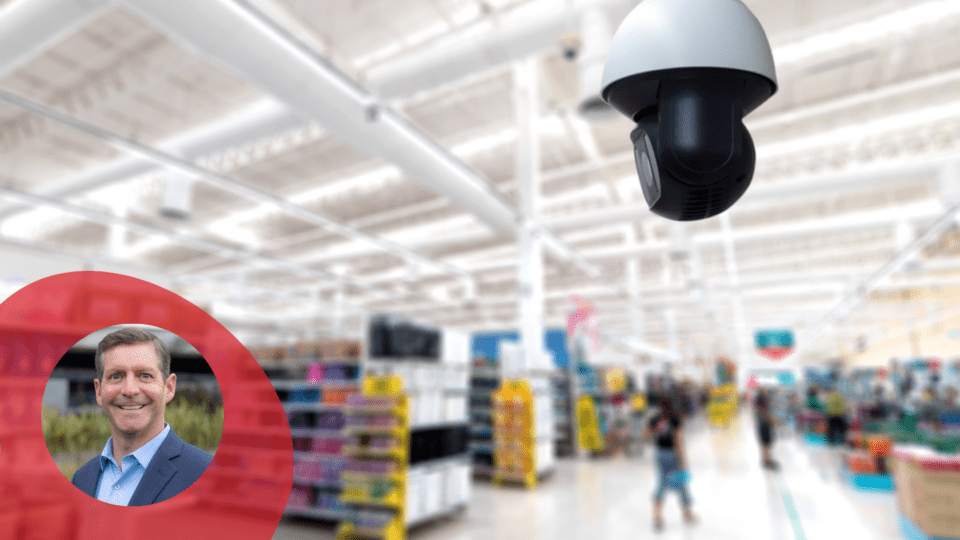Mention the words retail and video in the same sentence to any merchant and right away they think security cams, grainy low-res images and theft prevention.
Ensuring safety and security is still one of the main reasons companies deploy cameras. But digital video offers many more capabilities and far more value today, thanks to artificial intelligence and pioneering advancements made to camera and data storage technologies.
Video just might be one of the killer apps that help merchants adapt to the seismic shifts shaking up retail.
Rewiring Retail
As the holiday shopping season approaches, tech-savvy retailers will reassess what video technology offers. What they’ll learn is that a range of video solutions and strategies enables them to create new services, provide better customer service, keep closer tabs on inventory and learn more about the stores’ foot traffic to optimize product placement.
During this critical and challenging period for retail, it’s no secret that brick-and-mortar stores need fresh solutions and strategies.
Retail has suffered a string of setbacks in recent years. A worldwide pandemic kept shoppers hunkered down at home and out of malls and stores for two years. It was then that consumers developed a ravenous appetite for online shopping and speedy home delivery, while losing their taste for city centers and malls.
The expected bounce-back has, at best, developed slowly. Pile all this on top of a sluggish economy and expectations for holiday spending in 2022 range from modest to bleak. Meanwhile, it’s anybody’s guess as to what the new normal in retailing will be after the dust settles.
Facing so much uncertainty, many store owners can benefit by becoming more resourceful and creative with the tools they already own. If merchants can rethink how they apply and deploy video, they will find that this rejuvenated technology has the capability to improve multiple areas of their business.
Video isn’t Exclusive to the Big Box
The first thing merchants should know is that smart-video systems are far more accessible to a wider range of retailers than ever before. For a long time, the perception was that advanced AI systems were only affordable to big box retailers or chains that employed advanced physical security or IT departments.
Many more products and services have become available at varying price points. At the same time, advancements have made much of the gear and systems easier to operate and maintain.
Driving the evolution are the many innovations made to cameras, improved AI capabilities in mainstream recorders, and the creation of pioneering Video Surveillance as a Service (VSaaS) and data-storage systems — the backbone supporting it all.
Camera technology has proliferated to higher resolutions and now delivers multiple video and data streams. The data from these streams are processed at the recorder and stored on hard-disk drives (HDD), which have grown in both capacity and capability and now support Full HD and 4K streams.
Smart-video HDDs are engineered to transfer data to storage while enabling video playback and analytic operations. To meet all the demands, smart drives have been engineered to be more intelligent and powerful.
The Smart in Smart Video
Organizations worldwide are finding creative new ways to put these capabilities to work. AI-powered solutions with object and people detection can help retailers reduce shrinkage and improve safe shopping conditions. They can identify key customer-traffic patterns within a brick-and-mortar store to help merchants optimize store layout.
Video analytics can help reduce long queues by determining if groups are backing up in line near cash registers, automatically alerting managers that more help is needed at these locations. AI-driven video can help read heat maps to determine customer movement throughout a store.
They can measure walk-in rates by accurately counting the people entering and leaving a store and distinguishing between employees and customers. Video can help spot empty shelves in stores or in warehouses. To eliminate costly and arduous cycle counting, some smart warehouses now track inventory by deploying camera-equipped drone quadcopters to fly up and down aisles and record SKUs.
It’s important to note that these aren’t predictions about futuristic whiz-bang technology. These applications are available today.
Extracting Value
Certainly, security and safety will always be a primary objective for smart video systems. But to get more from a system, retailers should carefully consider how their operations and customer experience can be improved with a smart-video system.
For example, a store may be able to replace two to three traditional cameras with a single panoramic, 360-view camera. If the store is part of a chain with, say, 10 locations, the total number of cameras deployed may be in the dozens — when they could get the job done with far fewer.
Without doubt, retailers should upgrade in the near term to 4K resolution cameras. The increase in pixels provides greater data points for an analytics system to pattern and match.
Merchants seeking to do more with video must also increase storage capacity so that they can store video data longer. Increasingly, AI analytic systems will possess the ability to process historical data, and not just in real time. But store owners must have the video stored for AI to operate. The more information processed by analytics, the more data-driven insights are uncovered.
The whole video data analytics trend may sound expensive or too technical for smaller chains, but consider that the insights generated could become a gold mine of knowledge. Retailers must decide whether the answers to their questions about shopping patterns, store experiences and creating greater operational efficiency are valuable to them.
They must also consider where AI data science, which is advancing so rapidly, will be in three to five years, and how it could potentially transform their business operations but also those of rivals.
Marc Tanguay serves as Senior Marketing Manager for the Smart Video segment at Western Digital. He has 20+ years of experience in product marketing, go-to-market strategy and managing customer experiences related to smart video/surveillance, access control and video analytics products, solutions, services, and partnerships.




